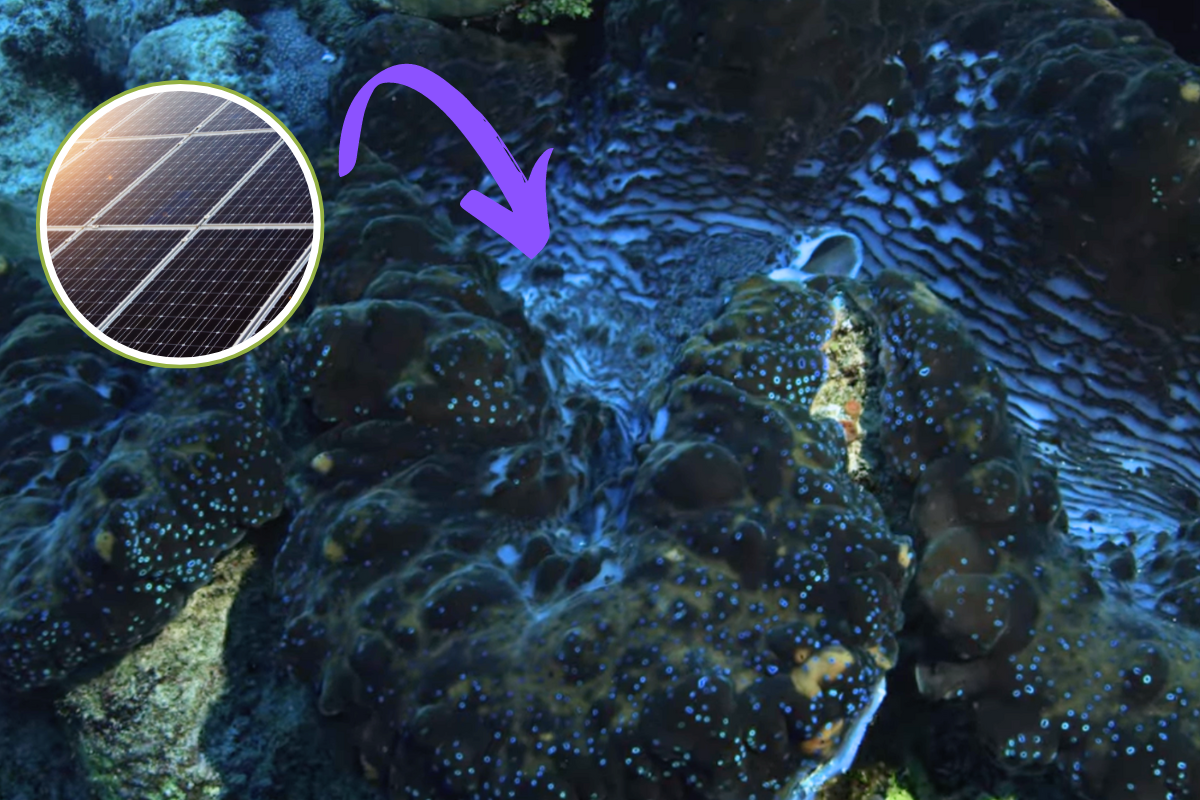Giant clams from the Western Pacific may be the world's most efficient solar energy system thanks to their geometry and ability to disperse and absorb sunlight. The model developed by a Yale team showed that these clams have an efficiency of 67%, much higher than the 14% of tropical green leaves and any existing solar panel technology.

A Yale researcher has uncovered that giant clams from the Western Pacific might represent the most efficient solar energy system in the world. In a recent study, Alison Sweeney revealed that these clams have significant potential as a model for solar energy systems.
This potential arises because giant clams possess precise geometries, dynamic vertical columns of photosynthetic receptors covered by a thin light-scattering layer, which could make them the most efficient solar energy systems on Earth.
“It’s counterintuitive for many because clams operate under intense sunlight, but they are actually very dark inside. The truth is that clams are more efficient at converting solar energy than any existing solar panel technology,” explained Alison Sweeney, associate professor of physics and ecology & evolutionary biology at Yale University.
A new study published by a research team led by Sweeney in the journal PRX: Energy has presented an efficiency model based on giant clams. This model examines the maximum efficiency of photosynthetic systems based on the geometry, movement, and light-scattering properties of giant clams. It is the latest in a series of studies from Sweeney’s lab that showcase the biological mechanisms of the natural world as inspiration for new sustainable materials and designs.
The giant clams, found in the shallow waters of Palau in the Western Pacific, are photosymbiotic, meaning they host single-celled algae on their surface, which absorb sunlight after it has been scattered by a layer of cells. The alignment of the algae in vertical columns, parallel to the incoming light, allows for more efficient absorption of sunlight.
Achieving remarkable solar conversion efficiency
Drawing on the geometry of giant clams, Sweeney and her team created a model to calculate the ability to transform photons into electrons, achieving an efficiency rate of 42%.
However, considering how the clams stretch out to maximize sunlight capture as it filters through the water, the model’s efficiency increases to 67%. In comparison, a green leaf system in a tropical environment reaches only 14%.
“It is also important to recognize and remember that we can only study biodiversity in places where it is preserved,”
concluded the researcher.
Source: Yale News
